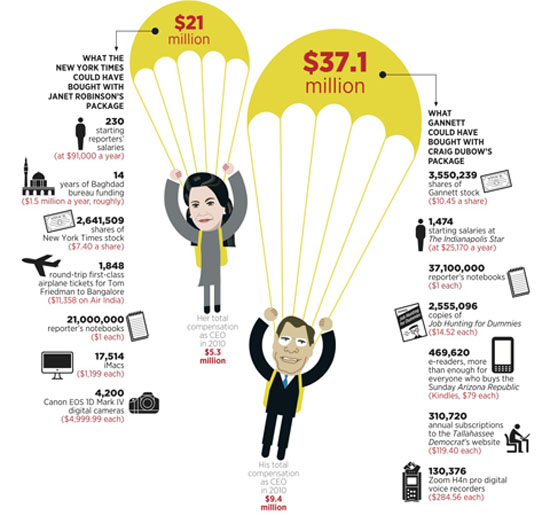Sign up for The Media Today, CJR’s daily newsletter.
Click here to see a larger version of this image.
The tenures of two recently departed CEOs—Janet Robinson of The New York Times Company, and Craig Dubow of Gannett—coincided with the most financially devastating period in the history of newspapers. And few would consider either executive’s tenure a success.
In Robinson’s seven years at the NYT, the stock plunged more than 80 percent, and the company had to be rescued with a quarter-billion-dollar loan from Carlos Slim, the Mexican business mogul. It cut staff, sold 16 of its smaller newspapers, and, as of the third quarter of last year, posted cumulative earnings of negative $29 million since the start of 2008.
Upon her exit, Robinson got a $21 million golden parachute, according to Bloomberg News, including $4.5 million for a one-year consulting contract. The company added extra benefits to Robinson’s $10.9 million pension, which accumulated over 28 years. It then froze some employee pensions a week later, sparking a mini-revolt, with more than 500 current and former Times employees signing an open letter to the chairman, Arthur Sulzberger Jr. The Times paid Robinson $5.3 million in 2010, including some retirement benefits.
Compared to Gannett, though, the Times looks austere: In October, four months after handing 700 employees pink slips, Gannett gave Dubow a $37.1 million package, also accumulated over decades. He earned a mere $9.4 million in 2010, some of which padded his retirement package. A few weeks later, the company announced it would force employees to take their fifth unpaid furlough in three years.
Has America ever needed a media defender more than now? Help us by joining CJR today.



